Technologies
Best Flip Phone of 2023
The Galaxy Z Flip 5 is our favorite, but there are other choices worth your attention.
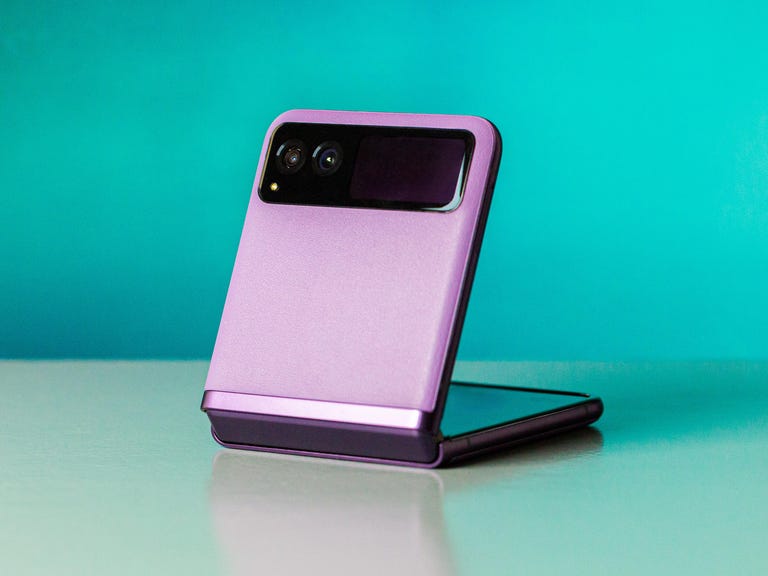
 Why You Can Trust CNET
Why You Can Trust CNET
Years of Experience
Hands-on Product Reviewers
Sq. Feet of Lab Space
Flip phones ruled the early 2000s, and now companies like Samsung, Motorola and Oppo have been bringing them back. But with a modern twist.
Flip phones with bendable screens have been around for the last several years, but they took a leap forward in 2023. The Galaxy Z Flip 5 and Motorola Razr Plus gained larger screens than their predecessors, making them more useful when closed. Oppo’s recently announced Find N3 Flip has an additional camera among other improvements.
While expensive and generally more fragile than standard phones, flip phones provide some benefits you can’t get with regular devices. They fit more easily in your pocket and are more manageable to use with one hand when closed. You can also prop them up by folding them halfway, which makes it possible to take a photo or view the screen without having to hold the device. They also have a distinct design that makes them stand out from other smartphones.
However, if you don’t care about those factors, you should consider one of the cheaper, nonfoldable devices listed in our best phones guide. If you’re considering buying a flip phone in 2023, here are your best options.
What is the best flip phone for most people?
The Galaxy Z Flip 5 is CNET’s top flip phone pick for 2023. It was a close call between Samsung’s new flip phone and the similarly priced Motorola Razr Plus. But Samsung’s design feels more sturdy, the camera takes more colorful photos and the company provides Android version updates for a longer period of time compared to Motorola, making it our favorite choice. Samsung also has a history of rolling out new features to its phones over time through updates to its One UI software, giving it another advantage.
Best flip phones of 2023
The Galaxy Z Flip 5 is the biggest leap forward Samsung’s flip phone has seen in years. Samsung has significantly expanded the size of the cover screen located on the outside of the device, meaning you can look up directions, take photos and send messages without opening the phone. It’s this, combined with the Z Flip’s solid battery life and sturdy design, that makes it a top pick.
The Z Flip 5 may be our favorite flip phone, but there are still some drawbacks to be aware of. At $1,000, it’s still expensive for a phone without a telephoto camera. And not all apps work natively on the front screen as they do on the Motorola Razr Plus. Read our Galaxy Z Flip 5 review.
Pros:
- Big cover screen is fun to use
- New hinge eliminates the gap when closed
- Solid battery life
- More storage in base model
Cons:
- Expensive
- Not all apps work on the cover screen natively
- Apps don’t transition from main screen to cover screen
- Minimal camera updates
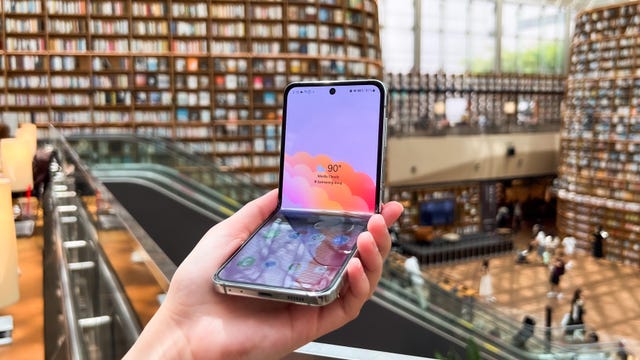
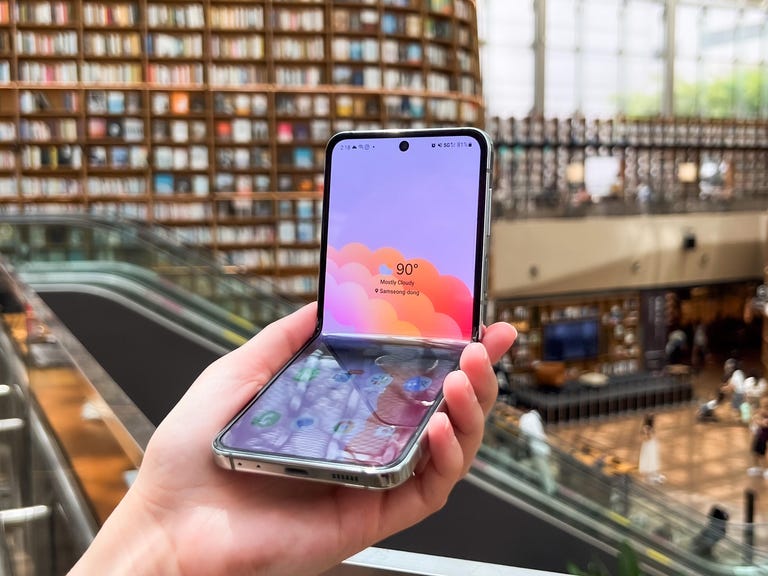
Best compact flip phone
Motorola Razr Plus
The Motorola Razr Plus raised the bar for what a flip phone should be in 2023. Its 3.6-inch cover screen allows you to use almost any app without opening the phone, plus battery life is long enough to get you through a busy day. It’s also thinner than the Galaxy Z Flip 5, which could make it the ideal choice for those who prioritize portability in a phone.
While I recommend the Galaxy Z Flip 5 as the best flip phone overall, the Razr Plus is worth considering if you prefer a thinner design and want to use more apps on the phone’s front screen without much extra fuss. The Razr Plus felt more fragile than the Z Flip 5 during my testing, but it’s certainly thinner, making it a great choice for those who care about compactness above all else. Read our Motorola Razr Plus review.
Pros:
- Large, useful cover screen
- Crease is barely visible
- Thin design
- Good battery life
- Fun photography features like photo previews
Cons:
- Not as many Android updates as Samsung
- Flex View feels limited
- Front screen gathers fingerprint smudges easily
- $1,000 is still expensive


The new Motorola Razr Plus
Best flip phone with a telephoto camera
Oppo Find N3 Flip
Oppo’s Find N3 Flip phone is unique for two reasons: It has a telephoto camera and a vertical cover screen, unlike the Samsung Galaxy Z Flip 5 and Motorola Razr Plus. That could make the Find N3 Flip an ideal choice for those who want closer zoom shots, although this phone also shines for its fast performance, stylish design and speedy charging. The crease on the interior screen is also impressively subtle. That said, there are some downsides to be aware of. The Find N3 Flip lacks wireless charging, and you’ll only be able to buy it in certain markets, which doesn’t include the US. Read our review of the Find N3 Flip.
Pros:
- Cover screen supports Google Calendar, Gmail and other third-party apps
- Addition of a telephoto lens
- Improved durability IPX4 rating
Cons:
- Obvious branding
- Raised edges of cover screen
- No wireless charging

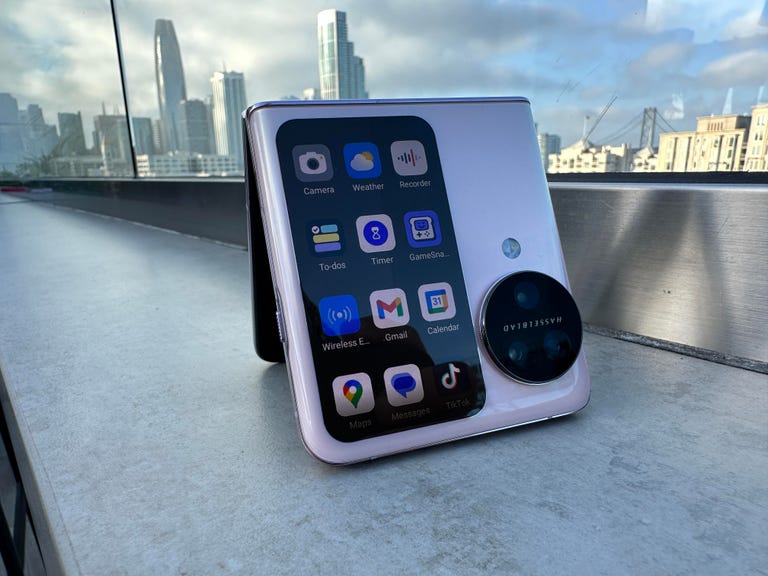
Here’s a sampling of apps you can use on the cover screen of the Find N3 Flip.
Best foldable for budget buyers
Motorola Razr 2023
The Motorola Razr 2023 is the most affordable, widely released foldable phone with a $700 price tag, notably below the $1,000 prices of clamshell foldables like the Razr Plus and Samsung Galaxy Flip 5. Motorola made some obvious compromises for affordability, like losing its competitors’ full-front screen for a small 1.5-inch thumbnail-size external display.
Less obvious are more painful shortfalls: three years of Android OS updates and 128GB of nonexpandable storage (you’ll have to rely on cloud storage if you go over). If you can stomach those compromises, the Razr 2023 is a great phone with a svelte design, large 6.9-inch internal display and sharp 64-megapixel main camera (the less said about its other ultrawide lens, the better). It’s a phone that suits a specific niche: Folks who want to try out foldables for a few years, but don’t want to shell out a lot of money if they’re still iffy on whether this «flexible display» thing will take off.
Pros:
- Solid and svelte build quality
- Great main camera
- Fun foldable functionality
- Good price
Cons:
- 128GB onboard storage is limited
- Outer screen is very small
- 3 years of OS updates is less than competitors
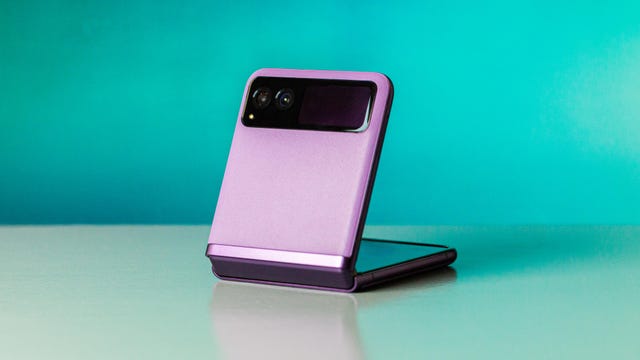

How to buy a new phone
Know what you care about most: Is it screen size? Camera quality? Battery life? This will help narrow down your choices. If you’re interested in a foldable phone, design and screen size should be more important to you than camera quality
Don’t discount the midrange: Features of last year’s flagships always trickle down to this year’s midrange handsets.You can get a great phone that does almost everything that a premium phone can do for a fraction of the price. Google’s Pixel 7 Pro packs a great zoom camera, but the base Pixel 7 has most of the same key specs and comes at a more reasonable price. But if you’re trying to save a few bucks, you shouldn’t be considering a flip phone. Devices like the Galaxy Z Flip 5 and Motorola Razr Plus are priced like high-end premium phones, although Motorola plans to release a cheaper Razr this year.
Shop the sales: Look for deep discounts and promo deals around major holidays, especially Amazon’s Prime Day and Black Friday. And find out what your grace period is in case you need a quick return or exchange.
Last year’s phones: They can often be a great deal, too. Wait for this year’s launch to get last year’s phone for less, when stores and carriers may be trying to offload their existing stock. However, keep in mind you’ll miss out on the spacious cover screens found on the Galaxy Z Flip 5 and Razr Plus by going for last year’s models.
Hold the phone in hand at a store first: You may love or hate the way it looks and feels in person. This is especially important for flip phones and other foldable devices, particularly if it’s your first time using one.
Check if you’re already invested: Have you already bought a lot of iPhone apps and iTunes movies? Stick with an iPhone if you still want access to them. Likewise, if you’ve invested in loads of Android apps, you’ll want to stay on that side of the fence. Otherwise, it’s simple enough to switch platforms. However, those interested in flip phones only have Android devices to choose from for now.
Buy a case and screen protector: You’ll protect your phone from costly damage, and will increase the phone’s resale or trade-in value for when you’re ready to move on.
How we test phones
We test every phone in real-world scenarios, focusing on its features, design, performance, cameras, battery life and overall value. We document our findings in an initial review that is periodically updated when there are new software updates, or to compare it against new phones from competitors such as Apple, Samsung, Google and OnePlus. Below is our methodology for testing smartphones in general, which also applies to flip phones.
Photography
Photography is a major focus for most phones these days, so we take pictures and videos of various subjects in a variety of settings and lighting scenarios. We try out any new camera modes, such as Action mode that debuted with the iPhone 14 line, or the Unblur photo tool that launched with the Google Pixel 7 series.
Battery life
Battery testing is conducted in a variety of ways. We assess how long a phone lasts during a typical day of use and note how it performs during more focused sessions of video calls, media streaming and gaming. We also conduct a video playback test, as a simple, replicable measure of pure battery life, which isn’t always included in the initial review but sometimes added later in an update.
Performance measuring
We use benchmarking apps to measure each phone’s performance, alongside our own anecdotal experiences using the phone for our review. Of note are how graphics and animations look. Are they smooth? Or do they lag or stutter? We also look at how quickly the phone switches between horizontal and vertical orientations, and how fast the camera app opens and is ready to take a photo.
We perform processor-heavy tasks like editing photos, exporting videos and playing games. We evaluate whether a newer version of a particular phone includes enough features to make it worth upgrading from older models.
Read more: How we test phones
Flip phone FAQs
Technologies
Stay Informed About Your Flights This Holiday Season With Your iPhone’s Tracker
Your iPhone is hiding a flight tracker. Here’s how it works.
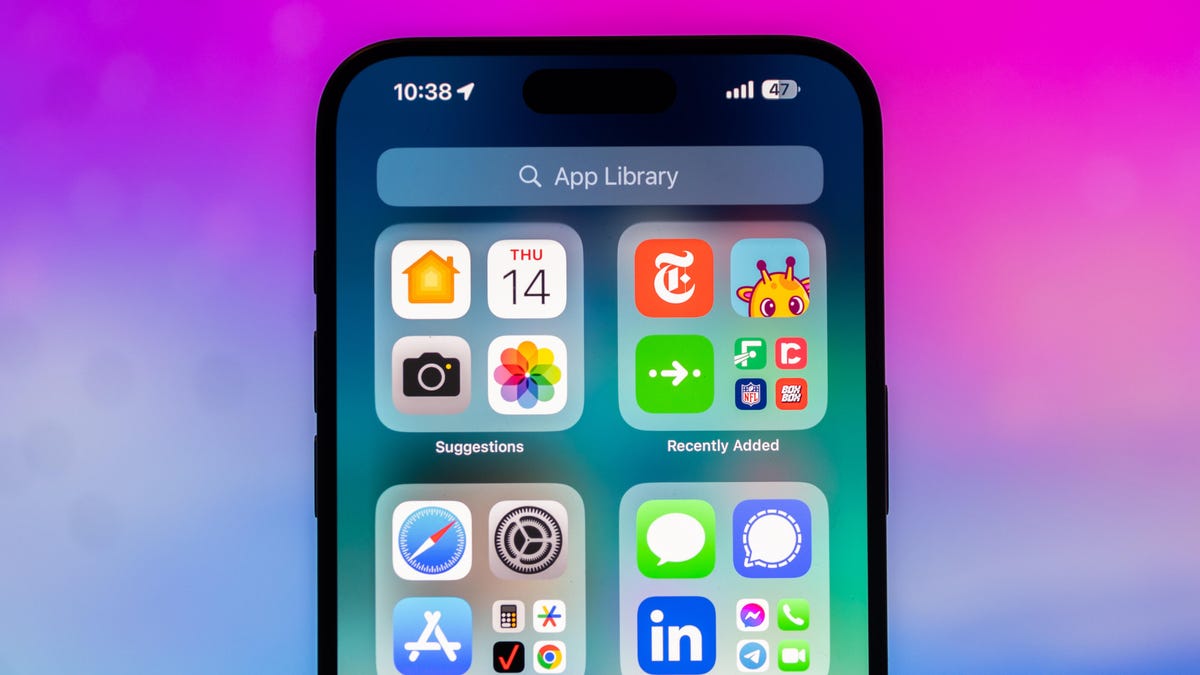
Thanksgiving is only a few short weeks away and if you plan on flying during the holiday season, keeping up-to-date on changes to your flights is crucial. Airports can be hectic during any holiday, but with the government shutdown continuing, flights are liable to change or be cancelled more often.
Luckily, it’s never been easier to get up-to-date information about your flight. For starters, your airline probably has an app, and if not, you can check its website. If you’re in a hurry, you can Google the flight number. Or you can just use your iPhone’s built-in flight tracker that’s sneakily tucked away.
That’s right: Your iPhone has a flight tracker that you may have never known about. It’s there for when it’s needed. Below, we’ll show you have to access it in not one, but two places, so you never have to go hunting for your flight info elsewhere again.
Don’t miss any of our unbiased tech content and lab-based reviews. Add CNET as a preferred Google source on Chrome.
For more on the iPhone, check out everything Apple announced at WWDC 2025.
How to track your flight via iMessage
Before we start, there are a few prerequisites you must meet:
- Make sure iMessage is enabled (it doesn’t work with SMS/MMS).
- You’ll need your flight number somewhere in your text messages, whether you’ve sent that information to someone (even yourself) or it’s been sent to you.
- The flight number must be sent in this format: [Airline] [Flight number], for example, American Airlines 9707.
Launch the native Messages app on your iPhone and open the text message thread that contains your flight information. You’ll know the flight tracker feature works when the text with the flight information appears underlined, which means it’s actionable and you can tap on it.
If your flight is still several months away or it’s already passed, you might see a message that says, «Flight information unavailable.» You might also see another flight that’s not yours because airlines recycle flight numbers.
You can check your flight status from Spotlight Search, too
If getting your flight information from Messages wasn’t easy enough, you can also grab the details right from your iPhone’s home screen by swiping down and adding your flight number into Spotlight Search. Even better, this works with Spotlight Search on your Mac computer, too.
How to access the hidden flight tracker
Although the airline name/flight number format highlighted above is the best way to go, there are other texting options that will lead you to the same result. So let’s say we stick with American Airlines 9707, other options that may bring up the flight tracker include:
- AmericanAirlines9707 (no spaces)
- AmericanAirlines 9707 (only one space)
- AA9707 (airline name is abbreviated and no space)
- AA 9707 (abbreviated and space)
I would suggest you keep the airline name spelled out completely and add a space between the two pieces of information — like in the previous section — because for some airlines, these alternative options may not work.
Real-time flight tracking
Once everything is set, tap on the flight information in your text messages. If the feature works correctly, you should see the following two options appear in a quick-action menu:
- Preview Flight: View the flight’s details. Tap this to view more information about the flight.
- Copy Flight Code: Copy the flight code to your clipboard (in case you want to send your flight details to someone else via text or email).
If you select Preview Flight, at the top of the window, you’ll see the best part of this feature: a real-time flight tracker map. A line will connect the two destinations, and a tiny airplane will move between them, indicating where the flight is at that exact moment.
Underneath the map, you’ll see important flight information:
- Airline name and flight number
- Flight status (arriving on time, delayed, canceled, etc.)
- Terminal and gate numbers (for arrival and departure)
- Arrival and departure time
- Flight duration
- Baggage claim (the number of the baggage carousel)
If you swipe left on the bottom half of the flight tracker, you can switch between flights, but only if there’s a return flight.
For more travel tips, don’t miss our test on whether AI can help you fly more sustainably.
Technologies
How to Get Verizon’s New Internet Plan for Just $25 Per Month
Technologies
This $20K Humanoid Robot Promises to Tidy Your Home. But There Are Strings Attached
The new Neo robot from 1X is designed to do chores. It’ll need help from you — and from folks behind the curtain.

It stands 5 feet, 6 inches tall, weighs about as much as a golden retriever and costs near the price of a brand-new budget car.
This is Neo, the humanoid robot. It’s billed as a personal assistant you can talk to and eventually rely on to take care of everyday tasks, such as loading the dishwasher and folding laundry.
Neo doesn’t work cheap. It’ll cost you $20,000. And even then, you’ll still have to train this new home bot, and possibly need a remote assist as well.
If that sounds enticing, preorders are now open (for a mere $200 down). You’ll be signing up as an early adopter for what Neo’s maker, a California-based company called 1X, is calling a «consumer-ready humanoid.» That’s opposed to other humanoids under development from the likes of Tesla and Figure, which are, for the moment at least, more focused on factory environments.
Neo is a whole order of magnitude different from robot vacuums like those from Roomba, Eufy and Ecovacs, and embodies a long-running sci-fi fantasy of robot maids and butlers doing chores and picking up after us. If this is the future, read on for more of what’s in store.
Don’t miss any of our unbiased tech content and lab-based reviews. Add CNET as a preferred Google source.
What the Neo robot can do around the house
The pitch from 1X is that Neo can do all manner of household chores: fold laundry, run a vacuum, tidy shelves, bring in the groceries. It can open doors, climb stairs and even act as a home entertainment system.
Neo appears to move smoothly, with a soft, almost human-like gait, thanks to 1X’s tendon-driven motor system that gives it gentle motion and impressive strength. The company says it can lift up to 154 pounds and carry 55 pounds, but it is quieter than a refrigerator. It’s covered in soft materials and neutral colors, making it look less intimidating than metallic prototypes from other companies.
The company says Neo has a 4-hour runtime. Its hands are IP68-rated, meaning they’re submersible in water. It can connect via Wi-Fi, Bluetooth and 5G. For conversation, it has a built-in LLM, the same sort of AI technology that powers ChatGPT and Gemini.
The primary way to control the Neo robot will be by speaking to it, just as if it were a person in your home.
Still, Neo’s usefulness today depends heavily on how you define useful. The Wall Street Journal’s Joanna Stern got an up-close look at Neo at 1X’s headquarters and found that, at least for now, it’s largely teleoperated, meaning a human often operates it remotely using a virtual-reality headset and controllers.
«I didn’t see Neo do anything autonomously, although the company did share a video of Neo opening a door on its own,» Stern wrote last week.
1X CEO Bernt Børnich told her that Neo will do most things autonomously in 2026, though he also acknowledged that the quality «may lag at first.»
The company’s FAQ says that for any chore request Neo doesn’t know how to accomplish, «you can schedule a 1X Expert to guide it» to help the robot «learn while getting the job done.»
What you need to know about Neo and privacy
Part of what early adopters are signing up for is to let Neo learn from their environment so that future versions can operate more independently.
That learning process raises privacy and trust questions. The robot uses a mix of visual, audio and contextual intelligence — meaning it can see, hear and remember interactions with users throughout their homes.
«If you buy this product, it is because you’re OK with that social contract,» Børnich told the Journal. «It’s less about Neo instantly doing your chores and more about you helping Neo learn to do them safely and effectively.»
Neo’s reliance on human operation behind the scenes prompted a response from John Carmack, a computer industry luminary known for his work with VR systems and the lead programmer of classic video games including Doom and Quake.
«Companies selling the dream of autonomous household humanoid robots today would be better off embracing reality and selling ‘remote operated household help’,» he wrote in a post on the X social network (formerly Twitter) on Monday.
1X says it’s taking steps to protect your privacy: Neo listens only when it recognizes it’s being addressed, and its cameras will blur out humans. You can restrict Neo from entering or viewing specific areas of your home, and the robot will never be teleoperated without owner approval, the company says.
But inviting an AI-equipped humanoid to observe your home life isn’t a small step.
The first units will ship to customers in the US in 2026. There is a $499 monthly subscription alternative to the $20,000 full-purchase price, though that will be available at an unspecified later date. A broader international rollout is promised for 2027.
Neo’s got a long road ahead of it to live up to the expectations set by Rosie the Robot in The Jetsons way back when. But this is no Hanna-Barbera cartoon. What we’re seeing now is a much more tangible harbinger of change.
-

 Technologies3 года ago
Technologies3 года agoTech Companies Need to Be Held Accountable for Security, Experts Say
-

 Technologies3 года ago
Technologies3 года agoBest Handheld Game Console in 2023
-

 Technologies3 года ago
Technologies3 года agoTighten Up Your VR Game With the Best Head Straps for Quest 2
-

 Technologies4 года ago
Technologies4 года agoVerum, Wickr and Threema: next generation secured messengers
-

 Technologies4 года ago
Technologies4 года agoBlack Friday 2021: The best deals on TVs, headphones, kitchenware, and more
-

 Technologies4 года ago
Technologies4 года agoGoogle to require vaccinations as Silicon Valley rethinks return-to-office policies
-

 Technologies4 года ago
Technologies4 года agoOlivia Harlan Dekker for Verum Messenger
-

 Technologies4 года ago
Technologies4 года agoiPhone 13 event: How to watch Apple’s big announcement tomorrow


